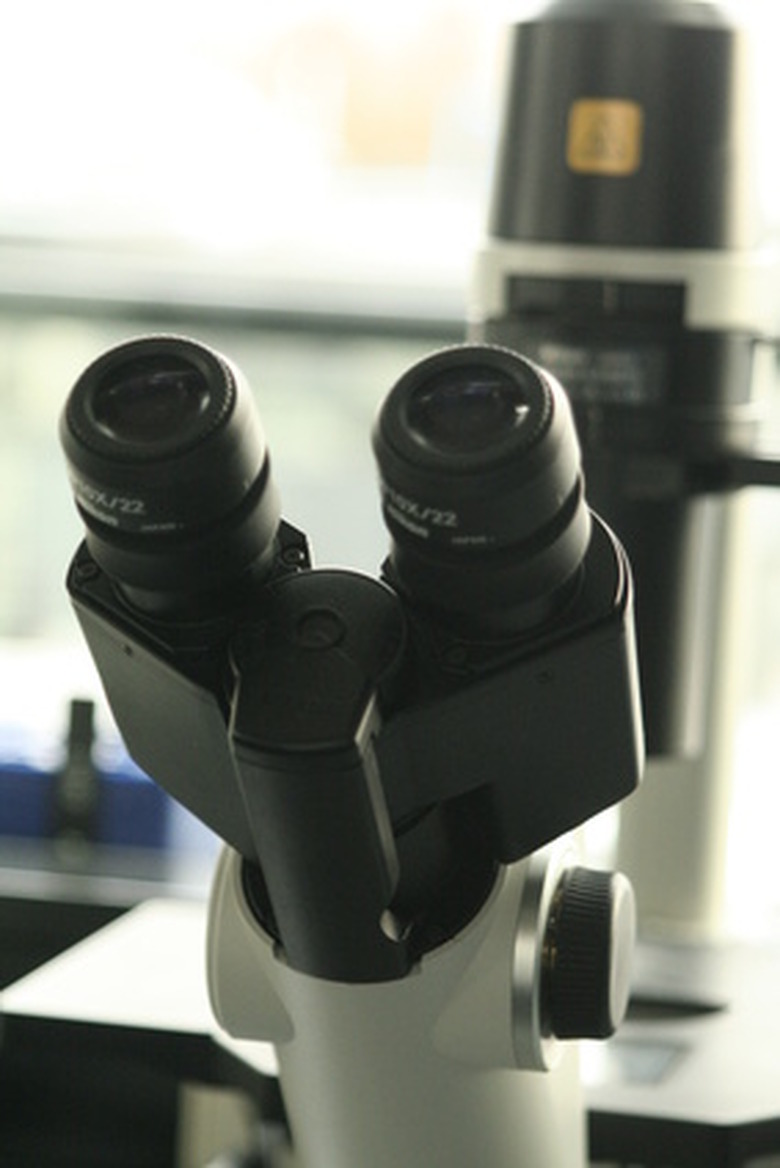Electron Microscope Advantages
As the objects they studied grew smaller and smaller, scientists had to develop more sophisticated tools for seeing them. Light microscopes cannot detect objects, such as individual virus particles, molecules, and atoms, that are below a certain threshold of size. They also cannot provide adequate three-dimensional images. Electron microscopes were developed to overcome these limitations. They allow scientists to scrutinize objects much smaller than those that are possible to see with light microscopes and provide crisp three-dimensional images of them.
Greater Magnification
Greater Magnification
The size of an object that a scientist can see through a light microscope is limited to the smallest wavelength of visible light, which is approximately 0.4 micrometers. Any object with a diameter smaller than that will not reflect light and therefore not be visible to a light-based instrument. Some examples of such small objects are individual atoms, molecules, and virus particles. Electron microscopes can generate images of these things because they do not depend on light from the visible spectrum to be reflected by them. Instead, high energy electrons are applied to the sample to be studied, and the behavior of these electrons–how they are reflected and deflected by the object–is detected and used to generate an image.
Enhanced Depth of Field
Enhanced Depth of Field
The ability of a light microscope to form a three-dimensional image of extremely small objects is limited. This is because a light microscope can only focus on one level of space at a time. Looking at a relatively large microorganism under such a microscope demonstrates this effect: One layer of the organism will be in focus, but its other layers will be blurred out of focus, and they can even interfere with the focused part of the image. Electron microscopes offer a greater depth of field than light microscopes do, which means that several two-dimensional layers of an object can be in focus at once, providing an overall image in three-dimensional quality.
Finer Magnification Control
Finer Magnification Control
The typical light microscope can zoom in at only a few discrete levels. For instance, common high school classroom microscopes can magnify objects at levels of 10x, 100x, and 400x, with nothing in between. It should not be surprising that there may be microscopic objects best viewed at 50x or 300x magnifications, but this would be unachievable with such a microscope. Electron microscopes, on the other hand, offer smooth range of magnifications. They are able to do this because of the nature of their "lenses," which are electromagnets whose power supplies can be adjusted to smoothly alter the trajectories of the electrons heading toward the detector to form an image.
Cite This Article
MLA
Banas, Timothy. "Electron Microscope Advantages" sciencing.com, https://www.sciencing.com/electron-microscope-advantages-6329788/. 24 April 2017.
APA
Banas, Timothy. (2017, April 24). Electron Microscope Advantages. sciencing.com. Retrieved from https://www.sciencing.com/electron-microscope-advantages-6329788/
Chicago
Banas, Timothy. Electron Microscope Advantages last modified March 24, 2022. https://www.sciencing.com/electron-microscope-advantages-6329788/
